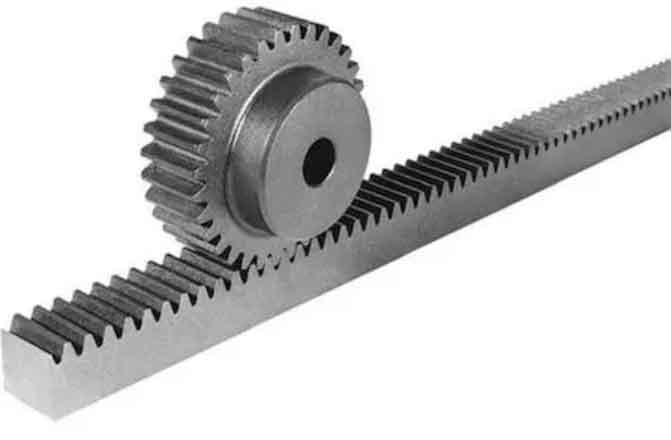
Rack and pinion gears play a crucial role in powering dynamic motion control in linear actuators. Linear actuators are mechanisms that convert rotary motion into linear motion, enabling precise and controlled movement in various applications. Rack and pinion gear systems provide the necessary force transmission and motion conversion for efficient and accurate linear actuation. Let’s explore how rack and pinion gears power dynamic motion control in linear actuators:
1. Rotary-to-Linear Motion Conversion:
Rack and pinion gears are at the core of rotary-to-linear motion conversion in linear actuators. The pinion gear, driven by a motor or another power source, rotates, engaging with the teeth of the rack. This rotation of the pinion gear transforms the rotary motion into linear motion along the rack’s length, resulting in controlled and precise linear actuation.
2. Efficient Power Transmission:
Rack and pinion gear systems provide efficient power transmission in linear actuators. The direct contact between the teeth of the rack and pinion ensures minimal energy loss during motion conversion. This efficient power transmission allows for precise and responsive linear actuation while optimizing energy consumption and system efficiency.
3. High Force Transmission:
Rack and pinion gear systems enable high force transmission in linear actuators. The tooth engagement between the rack and pinion gears, along with the gear design and materials, allows for the transfer of substantial forces. This high force transmission capability is critical in applications that require the actuator to move heavy loads or perform tasks that demand significant pushing or pulling forces.
4. Dynamic Motion Control:
Rack and pinion gears enable dynamic motion control in linear actuators. The direct engagement and low backlash between the rack and pinion gears facilitate rapid acceleration and deceleration, allowing for quick changes in direction and velocity. This dynamic motion control capability is essential in applications that require fast and precise linear actuation, such as robotics, industrial automation, or machine tools.
5. Precise Positioning and Accuracy:
Rack and pinion gear systems provide precise positioning and accuracy in linear actuators. The tooth profile and gear design allow for precise linear motion control, resulting in accurate positioning of the actuator. This level of precision is crucial in applications that require precise alignment, positioning, or repeatable linear motion.
6. Compact Design and Space Efficiency:
Rack and pinion gear systems have a compact design, making them well-suited for linear actuators with limited space. The slim profile of the rack and pinion gears allows for efficient utilization of space within the actuator assembly. This compactness enables the integration of rack and pinion gear systems into various linear actuator designs, providing more flexibility in system layout and space optimization.
7. Durability and Reliability:
Rack and pinion gear systems are known for their durability and reliability in linear actuators. The direct tooth engagement and robust gear construction ensure long-term performance even under demanding operating conditions. Proper lubrication and maintenance further enhance the longevity and reliability of rack and pinion gear systems, ensuring consistent and dependable linear actuation.
Rack and pinion gears, integrated into linear actuators, provide the necessary power transmission and motion conversion for dynamic and precise linear motion control. Their ability to convert rotary motion to linear motion efficiently, along with their high force transmission capability and precise positioning, make them essential components in various applications, including robotics, industrial automation, medical devices, and more. Rack and pinion gears empower linear actuators to achieve controlled and dynamic motion for a wide range of industrial and commercial applications.
